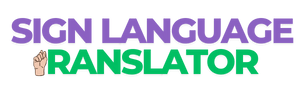Learning how to sign “wake up” is a practical and useful addition to your sign language vocabulary. Whether you’re communicating with Deaf individuals, teaching a baby to sign, or simply expanding your language skills, this guide will help you master this everyday phrase.
American Sign Language (ASL) Sign for “Wake Up” 😴➡️😊
To sign “wake up” in American Sign Language:
- Start with both hands in a closed position near your eyes
- Your hands should be in fists, with each pointer finger touching each thumb
- Then open both your eyes and your hands at the same time
- This sign represents the action of eyelids opening as if waking from sleep
The facial expression you use while making this sign is important. Use a sleepy facial expression to convey “wake up.” If you use a surprised look, do the sign quickly, and open your mouth in surprise, the same sign will mean “surprised.”
Teaching Babies to Sign “Wake Up” 👶🤲
Baby sign language can help your little one communicate before they can speak. Here’s how to teach the “wake up” sign to babies:
- Say the word “wake up” while performing the sign consistently
- Use the sign during your morning routine or when your baby is waking up from naps
- Be patient and consistent – babies may take time to learn and use the sign
- Show excitement and use exaggerated gestures to make the sign more engaging
Practical Uses for the “Wake Up” Sign 🕰️🌞
The “wake up” sign can be incorporated into daily routines:
- Morning greetings
- Establishing sleep and wake routines with children
- Asking someone what time they wake up
- Telling stories that involve waking up
Sample sentence: “What time do you wake up during summer vacation?”
Fun Ways to Practice 🎮🤩
- Use wake-up themed emojis in your messages: ⏰😴📢⬆️
- Practice with kaomojis like ٩(ˊ〇ˋ*) or (っ- ‸ -ς)
- Create morning routine flashcards that include the sign
- Practice signing along with morning-themed songs
Benefits of Learning Sign Language 🧠💪
Learning sign language offers numerous benefits:
- Improves communication with the Deaf community
- Enhances cognitive abilities and brain function
- Provides an alternative communication method
- Helps develop fine motor skills
- Creates more inclusive environments
Remember that consistency is key when learning any new sign. Practice regularly and incorporate the sign into your daily routine to help it become second nature.
Happy signing! 🙌✨
